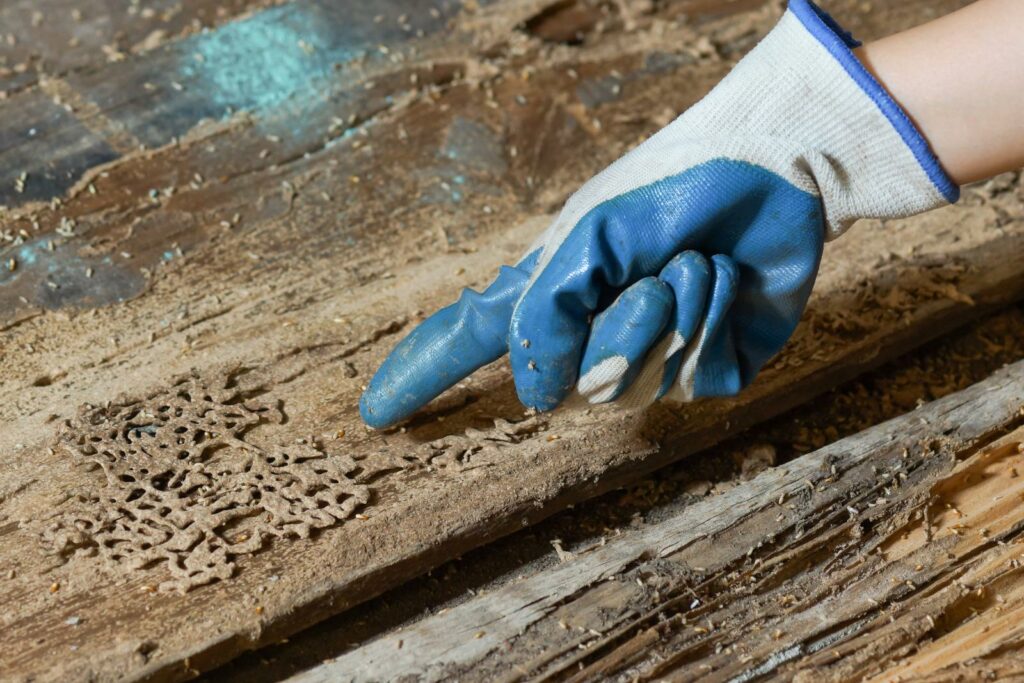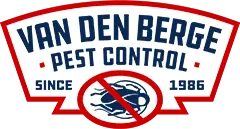
Contents
Imagine walking into your dream home, the smell of fresh paint filling the air as you step through the front door. But as you settle in, you start to notice small piles of sawdust near the baseboards and tiny holes appearing in the wooden furniture.
Could it be? Are termites silently feasting on your beloved abode?
In this comprehensive guide, we will unravel the secrets of termite infestations, revealing the signs to watch out for and the steps you can take to protect your home.
Hold on tight because what you’re about to discover may just save you from a termite nightmare you never saw coming.
Key Takeaways
- Prompt action is necessary to prevent further damage and costly repairs when signs of termite infestations are present.
- Consultation with a professional pest control company is recommended when identifying termite damage or witnessing a termite swarm.
- Regular inspections, moisture control, and maintenance are essential for termite prevention.
- Termite mud tubes indicate an active termite infestation and require immediate attention and action.
Signs of Termite Infestations
If you suspect a termite infestation in your home, there are several key signs you should look out for. Termites can cause extensive damage, so it’s important to catch the problem early.
One of the most common signs of a termite infestation is the presence of mud tubes. These pencil-thin tunnels are often found along walls, foundations, or other wooden structures. They serve as protection for termites as they travel between their nest and food sources.
Another sign to watch for is the presence of discarded wings. When termites swarm to start new colonies, they shed their wings after finding a suitable location. Finding a pile of wings near windowsills or other entry points is a strong indication of a termite problem.
You should also be wary of any soft or hollow-sounding wood in your home. Termites feed on cellulose, which is found in wood, and they can hollow out the inside of wooden structures, leaving them weak and susceptible to collapse.
Additionally, if you notice small piles of what appear to be sawdust near wooden structures, it could be a sign of termite activity. This sawdust-like material is actually termite excrement, known as frass.
If you have discovered any of these signs, it’s crucial to take immediate action. Termite prevention is key, and there are several treatment options available. Professional pest control companies can provide effective termite treatments such as liquid termiticides, termite baits, or fumigation. These treatments can eliminate existing infestations and provide long-term protection against future termite damage.
Identifying Termite Damage
To accurately assess the extent of a termite infestation, it’s vital to identify and understand the signs of termite damage in your home. By doing so, you can take immediate action and prevent further harm to your property. Termites are notorious for causing extensive damage to the structure of homes, and if left untreated, they can lead to costly repairs and compromise the safety of your living environment.
One of the most apparent signs of termite damage is the presence of mud tubes or tunnels. These tubes, which are usually brown or tan in color, serve as protected pathways for termites to move between their nest and the food source. If you notice any of these tubes along the walls, foundation, or other wooden structures in your home, it’s a clear indication of termite infestation.
Another telltale sign of termite damage is the presence of hollowed or damaged wood. Termites feed on cellulose, which is found in wood, and they can cause significant structural damage over time. If you tap on wooden surfaces and hear a hollow sound or notice crumbling or weakened wood, it’s likely that termites have been feasting on it.
In addition to mud tubes and damaged wood, you should also look out for discarded termite wings. When termites swarm to establish new colonies, they shed their wings after finding a suitable location. So, if you discover discarded wings near windowsills, doors, or other entry points, it’s a strong indication that termites have infiltrated your home.
To prevent further damage, it’s crucial to address a termite infestation promptly. Consult with a professional pest control company to assess the extent of the infestation and determine the most effective prevention methods. Remember, by identifying termite damage early on and taking swift action, you can protect your home and maintain a safe and secure living environment.
Termite Swarmers and Swarming
Termite swarmers, also known as alates, are reproductive termites that emerge from established colonies in search of a mate and a suitable location to start a new colony. These winged termites are often seen swarming in large numbers, especially during the spring season. Witnessing a termite swarm can be quite alarming, but it’s important to understand the purpose behind this behavior.
When a termite colony reaches a certain size and maturity, it produces swarmers as part of its natural reproductive cycle. These swarmers are equipped with wings that allow them to fly and disperse to new areas. Their mission is to find a mate from another colony and establish a new termite colony elsewhere. This behavior ensures the survival and expansion of the termite species.
While termite swarmers may seem harmless on their own, they’re a clear indication of a nearby termite colony. If you spot termite swarmers in or around your home, it’s crucial to take immediate action to prevent a potential infestation. By identifying and addressing the problem early on, you can save yourself from the costly damages that termites can cause to your property.
Termite prevention is key in protecting your home from these destructive pests. Regular inspections by a professional pest control company can help detect termite colonies before they become a major problem. Additionally, ensuring that your home is free from moisture issues, such as plumbing leaks or standing water, can significantly reduce the attractiveness of your property to termites.
Differentiating Between Subterranean and Drywood Termites
When distinguishing between subterranean and drywood termites, it’s important to understand their key differences. Subterranean termites are the most common type of termite infestation. They live in colonies underground and build mud tubes to travel between their nest and food sources. These termites are attracted to damp and moist areas and can cause extensive damage to wooden structures.
On the other hand, drywood termites don’t require contact with soil and can infest dry wood directly. They create intricate tunnel systems within the wood and are often found in attics, furniture, and wooden structures.
To prevent subterranean termite infestations, it’s crucial to eliminate moisture sources around your home. Fix leaks, improve ventilation, and ensure proper drainage to keep your home dry and termite-free. Regularly inspect your property for any signs of termite activity and seal any cracks or openings in your foundation or walls. Additionally, consider installing physical barriers like metal screens or sand barriers to prevent termites from accessing your home.
For drywood termites, prevention techniques involve regularly inspecting and maintaining your wooden structures. Keep firewood and lumber away from your home, as they can serve as entry points for termites. Seal any cracks or openings in your wood and apply a protective sealant to prevent termite infestations.
If you suspect a termite infestation, it’s crucial to contact a professional pest control company to assess the situation and determine the best treatment options. Termite treatment options vary depending on the severity of the infestation and the type of termites present. Some common treatments include liquid termiticides, termite baits, and fumigation. A professional will be able to recommend the most effective treatment method for your specific situation.
Identifying Termite Mud Tubes
As you inspect your property for signs of termite activity, one key indicator to look out for is the presence of termite mud tubes. These tubes are a sure sign that termites are actively infesting your property and require immediate attention. Termite mud tubes are narrow tunnels made of soil particles, saliva, and termite excrement, which termites use to travel between their nests and food sources. They provide protection and moisture for the termites, allowing them to navigate undetected.
To help you identify termite mud tubes, here is a table that highlights their characteristics:
| Characteristics | Description |
|---|---|
| Size | Varies but typically around 1/4 inch in diameter |
| Appearance | Brown or gray in color, resembling dried mud or pencil-like lines |
| Location | Found on foundation walls, wooden structures, and other surfaces where termites are present |
| Durability | Can be easily broken or damaged |
| Frequency | Multiple tubes may be present, indicating a larger infestation |
Now that you can recognize termite mud tubes, it’s important to take steps for termite mud tube prevention and implement effective termite control methods. Regularly inspect your property for any signs of termite mud tubes, especially in areas prone to moisture or wood-to-soil contact. Seal any cracks or openings in your home’s foundation and walls to prevent termites from entering. Additionally, ensure proper drainage and ventilation to minimize moisture buildup, which attracts termites.
Review
Uncovering termite infestations can be likened to peeling back the layers of an onion.
By recognizing the signs of termite damage, identifying termite swarmers, differentiating between subterranean and drywood termites, and spotting termite mud tubes, you can unveil the hidden problem beneath the surface.
Just like peeling an onion reveals its layers, unmasking termite infestations allows you to take control and protect your home from further damage.
Recent Posts
Comparing Termite Treatment Costs: A How-To Guide
When you’re faced with a termite infestation, understanding treatment costs is vital for effective management.
Understanding Exterminator Costs for Mosquito Control
Imagine you own a large backyard and decide to hire a mosquito exterminator. You might
What Are Average Exterminator Costs for Mosquito Control?
When it comes to mosquito control, understanding average exterminator costs is essential for effective management.
